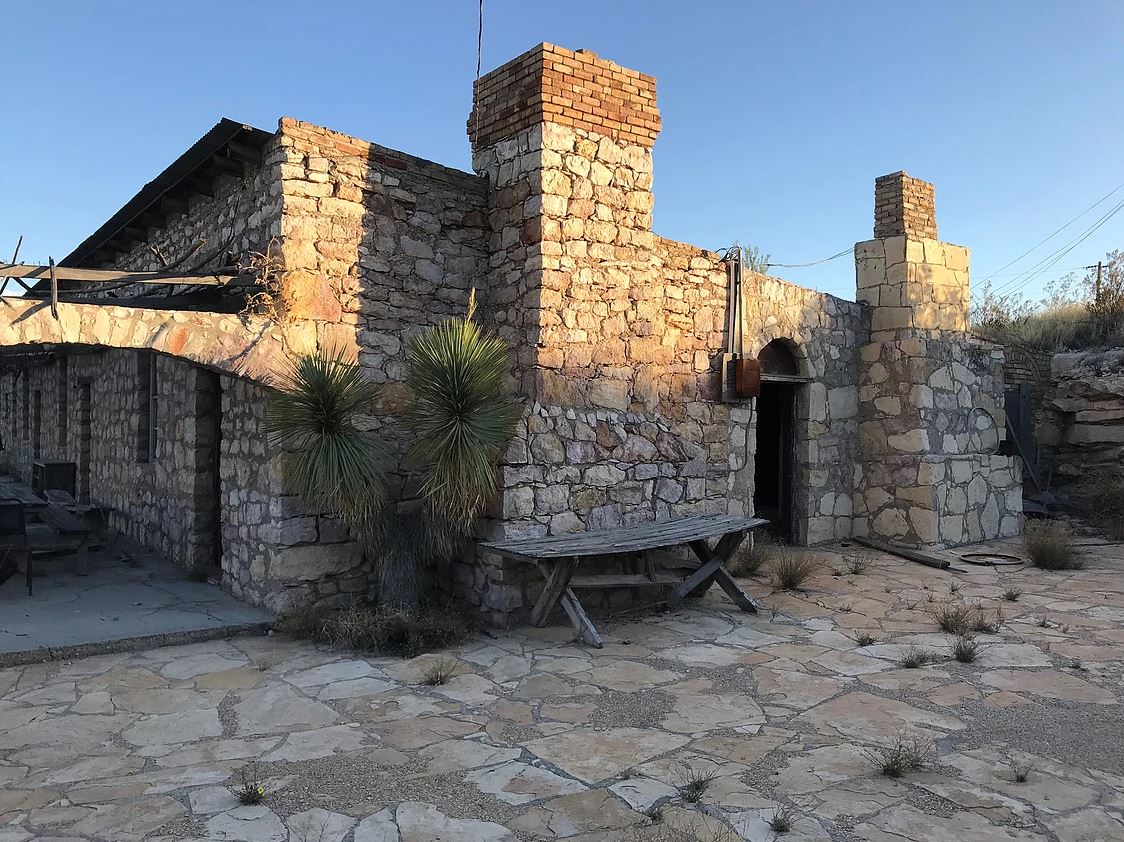The main house at The Villa de la Mina, a ghost town in Terlingua, which is near Big Bend in West Texas.
Courtesy of The Villa de la Mina/ The Villa de la Mina
Texas is famous for leading the nation in cattle, cotton and oil, but the Lone Star State can claim another distinction more appropriate for Halloween this week: Texas not only hosts more bat species than any other state, it has more ghost towns than any other state.
A Geotab analysis counts more than 500 ghost towns statewide, with the densest cluster in Wilson County near San Antonio. While many were abandoned after economic downturns or resource depletion, some were deserted following natural disasters, including extreme weather.
Article continues below this ad
Storms sweep away Indianola
The port of Indianola, on Matagorda Bay in Calhoun County, was founded in August 1846 as Indian Point and served as a port of entry for German immigrants bound for West Texas, according to the Texas State Historical Association.
The town soon grew into a bustling city of about 5,000 residents. For a brief time, Indianola became the second-busiest port in Texas. Thanks to its location, it was vital for trade and military purposes.
On September 16, 1875, a hurricane packing winds stronger than 110 mph struck the coastal town, sweeping much of it away. Even its lighthouses were demolished. The town rebuilt, but another hurricane struck 11 years later, in 1886.
Article continues below this ad
These storms devastated the low-lying city and caused great loss of life. The county seat was moved to Port Lavaca, and in 1887 the post office closed permanently. Today, almost nothing remains of the original town, and much of the site lies underwater because of storm-driven erosion.
A granite slab beside the bay at Indianola commemorates the Calhoun County Courthouse before it was destroyed by a hurricane in 1886 and the county seat was moved to Port Lavaca.
Joe Holley/Houston Chronicle
St. Mary’s of Aransas
St. Mary’s of Aransas, founded in 1850, quickly became a major port, shipping construction materials, hides, tallow, cattle, and cotton to South Texas towns. It thrived until the second Indianola hurricane in 1875 nearly destroyed the town. The population then declined, and the post office and general store closed permanently in 1907.
Article continues below this ad
Drought-stricken Lobo
Lobo is the most recent ghost town, abandoned about 30 years ago. Sitting in the Chihuahuan Desert near the Davis Mountains, it was founded in 1882 as a railroad water stop and later became a thriving cotton-farming community.
Lobo experienced brief periods of agricultural growth, but over time persistent drought, water scarcity, and declining commerce led to its abandonment.
Flood-flattened Ben Ficklin
Ben Ficklin, founded in 1873 near present-day San Angelo, was once an important settlement and a key stop along the San Antonio-El Paso Mail line. It even served as the county seat of Tom Green County.
Article continues below this ad
But less than a decade later, disaster struck. After an unusually wet summer in 1882, floodwaters from Dove Creek, Spring Creek, and the Concho River surged beyond their banks, devastating the town. According to the Texas State Historical Association, most of Ben Ficklin was destroyed, with only a few houses, the jail, and the courthouse left standing.
Old Bluffton resurfaces
Bluffton, founded in 1852, was a small Hill Country farming and ranching community once known as the best crossing point on the Colorado River.
By 1937, however, the town was intentionally abandoned when the Lower Colorado River Authority built Buchanan Dam, creating Lake Buchanan as part of a hydroelectric project. The original site was flooded, and residents relocated to what is now New Bluffton.
Article continues below this ad
In this Oct. 5, 2011, photo, a child’s gravesite, normally at least 20 to 30 feet underwater, joined other remnants of old Bluffton that had resurfaced after drought reduced water levels at Lake Buchanan in Central Texas.
Eric Gay/Associated Press
During periods of severe drought, remnants of Old Bluffton resurface, including building foundations, headstones, and artifacts. Bluffton is just one of several Texas towns submerged by reservoirs, built over the years to control flooding, secure reliable water supplies, and generate hydroelectric power. Other submerged ghost towns in Texas include:
Halsell under Lake Arrowhead
Towash under Lake Whitney
Preston under Lake Texoma
Friendship under Lake Granger
Sparta and Bland under Lake Belton
Spillville under Lake Toledo Bend
Zivley under Lake Livingston
Article continues below this ad
Submerging towns were seen as a necessary sacrifice to achieve broader public benefits, even though it displaced communities and erased local history.
Many of the Texas ghost towns that were shaped by extreme weather serve as reminders of nature’s power. These abandoned settlements offer valuable lessons in how we can adapt and prepare for future challenges posed by climate change.

